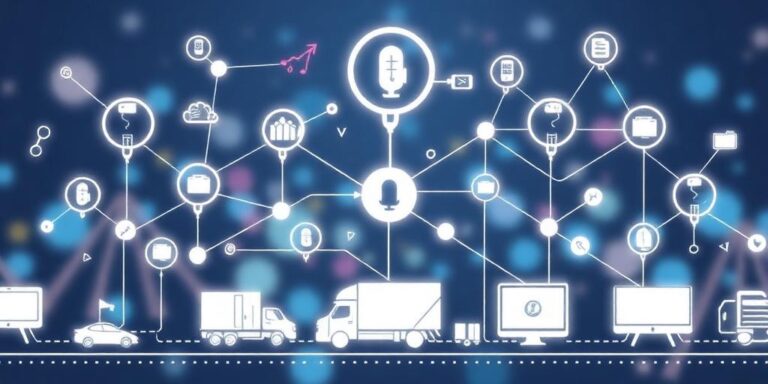IoT in Logistics and Supply Chain Management: Real-Time Visibility (2025)
The Internet of Things (IoT) is transforming logistics and supply chain management by providing unprecedented real-time visibility. By 2025, the integration of IoT devices and platforms will become even more sophisticated, leading to greater efficiency, reduced costs, and enhanced customer satisfaction.
Understanding IoT in Logistics
IoT in logistics involves the use of interconnected devices and sensors to monitor and track goods, vehicles, and environmental conditions throughout the supply chain. These devices generate data that is analyzed to provide insights and automate processes.
Key Applications of IoT in Logistics
- Real-Time Tracking: IoT sensors attached to packages, vehicles, and containers provide continuous location updates, allowing companies to monitor the movement of goods in real-time.
- Condition Monitoring: Sensors can monitor temperature, humidity, shock, and other environmental factors, ensuring that sensitive goods are transported under optimal conditions.
- Inventory Management: IoT-enabled inventory systems provide accurate, up-to-date information on stock levels, reducing the risk of stockouts and overstocking.
- Predictive Maintenance: Sensors on vehicles and equipment can detect early signs of wear and tear, enabling proactive maintenance and reducing downtime.
- Route Optimization: By analyzing real-time traffic and weather data, IoT systems can optimize delivery routes, reducing fuel consumption and delivery times.
Benefits of IoT Implementation
- Enhanced Visibility: Real-time data provides a clear view of the entire supply chain, enabling better decision-making and faster response to disruptions.
- Improved Efficiency: Automation of processes such as inventory management and route optimization reduces manual effort and improves overall efficiency.
- Reduced Costs: By optimizing routes, preventing damage to goods, and reducing downtime, IoT helps to lower operational costs.
- Increased Customer Satisfaction: Timely and accurate delivery information enhances the customer experience and builds trust.
- Better Risk Management: Real-time monitoring and predictive analytics enable companies to identify and mitigate potential risks, such as theft or spoilage.
Challenges and Considerations
- Security: Ensuring the security of IoT devices and data is crucial to prevent unauthorized access and cyberattacks.
- Interoperability: Integrating IoT devices from different vendors can be challenging due to lack of standardization.
- Data Management: Handling and analyzing the large volumes of data generated by IoT devices requires robust data management infrastructure.
- Cost: Implementing IoT solutions can be expensive, requiring investment in hardware, software, and infrastructure.
The Future of IoT in Logistics (2025)
By 2025, IoT in logistics will be characterized by:
- Wider Adoption: More companies will adopt IoT solutions as the technology becomes more affordable and accessible.
- Advanced Analytics: Increased use of artificial intelligence and machine learning to analyze IoT data and provide predictive insights.
- Greater Automation: Further automation of logistics processes, such as autonomous vehicles and robotic warehouses.
- Enhanced Integration: Seamless integration of IoT systems with other enterprise systems, such as ERP and CRM.
Conclusion
IoT is set to revolutionize logistics and supply chain management, offering real-time visibility and enabling companies to optimize their operations. While there are challenges to overcome, the benefits of IoT implementation are significant, making it an essential technology for businesses looking to stay competitive in the future.




